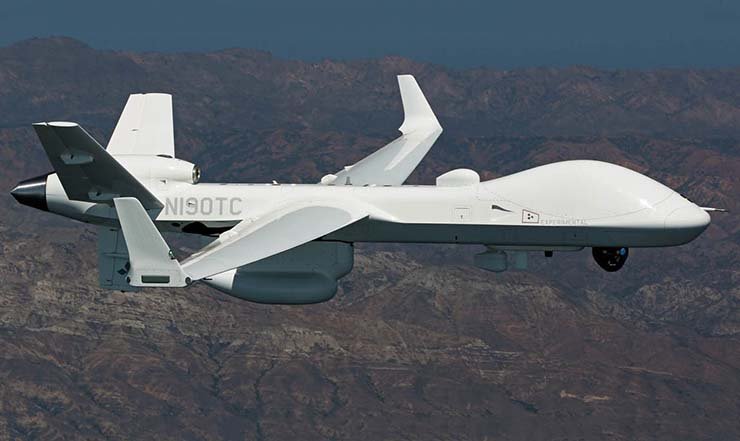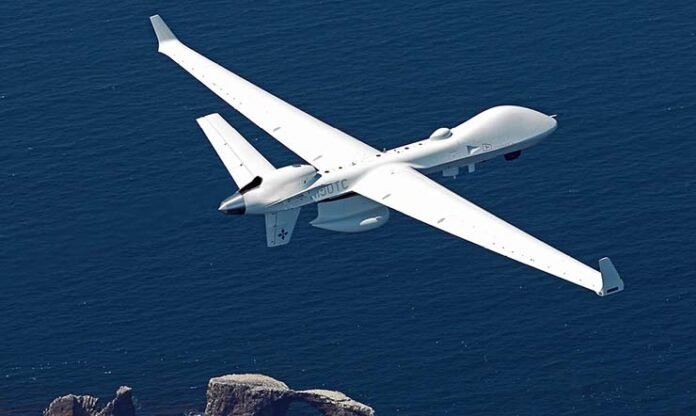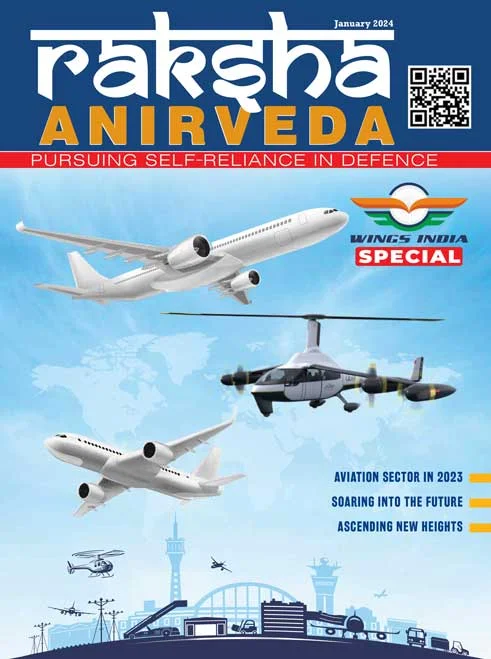Amid preparations to celebrate Independence Day, India is in the Making of an Inclusive Global Power. India looks ahead toward growing its roles and responsibilities on the world stage. Nothing can stop India now: the country’s vibrant democracy, its high-energy economy, and its technical leadership have placed it on a straight track toward growth and success. The great news is that India already is well along on this journey.
One core part of the foundation for this new structure in the 21st century is partnerships that already exist, which benefit India’s allies and friends as well as the nation itself, and which already are bearing fruit in terms of upgraded capabilities.
The Pioneer User of MQ-9B SeaGuardian
Look no further, for example, than unmanned aerial systems. The Indian Navy is a pioneer user of some of the most advanced new unmanned multi-mission aircraft in the world — like the MQ-9B SeaGuardian® manufactured by the American contractor General Atomics Aeronautical Systems, Inc. Specifically, the Indian Navy is flying two preproduction-model MQ-9Bs as part of a lease-hire agreement. Negotiations are underway for the acquisition of a larger fleet of newer, more capable full-production model aircraft.
Some milestones have been announced, including a partnership between builder GA-ASI and Bharat Forge Limited. Bharat Forge will manufacture landing gear components, subassemblies, and assemblies for the remotely piloted aircraft.

The precise terms of this agreement are still in the works, but what is already clear is that a future slate of MQ-9B aircraft for the Indian Armed Forces would incorporate heavy use of Indian technical know-how and production support on the Subcontinent. The programme for these aircraft would follow the footsteps of other collaboration agreements in which users of advanced unmanned aircraft build much of them for themselves.
One example is the programme negotiated between the United States and the United Kingdom. The Royal Air Force also flies the MQ-9B. In its case, British builders produce the aircraft’s V-tails and other components within the United Kingdom, which are then assembled with the final aircraft for delivery. The Canadian government and others have similar agreements in which their operational aircraft have a significant number of home-built components.
MQ-9B provides a wealth of intelligence. The aircraft can send back full-motion colour video or high-definition infrared footage by day or night. It has a synthetic aperture radar that permits it to see through clouds, fog, mist, or smoke.
Partnership with Bharat Forge
Work is well underway in India to build a similar arrangement. Some milestones have already been announced, including a partnership between builder GA-ASI and Bharat Forge Limited. Bharat Forge will manufacture landing gear components, subassemblies, and assemblies for the remotely piloted aircraft.
Bharat Forge is part of the Kalyani Group and represents India’s largest repository of metallurgical know-how, design, engineering experience, and manufacturing prowess. The company has five decades of experience in manufacturing a wide range of high-performance critical safety components. It offers full-service supply capability from concept to product design, engineering, manufacturing, testing, and validation.
Partnerships like these, with the support of the American and Indian governments, let these nations contribute their best in the service of their common interests and objectives. And, although the full outlines of an Indian programme for MQ-9B continue to take shape, it’s already clear what the aircraft have contributed to the security environment in the Indian Ocean.
With more than 10,000 operational flight hours, SeaGuardian has enabled India to greatly expand and improve its intelligence, surveillance, and reconnaissance from its shores to the east coast of Africa and beyond. These aircraft can fly for more than 30 hours, in some configurations, affording the ability to cover distances or remain over key areas, or both, that no human-piloted aircraft can match. Their high degree of operational availability means that much of the time, they are either aloft and ready for commanders’ tasking or they can be launched and assigned to a mission at rates far greater than traditional aircraft.
Long wings, a light fuselage, an efficient turboprop engine — and no human crew members aboard — also mean that MQ-9B costs only a fraction of what legacy patrol aircraft cost to acquire and operate.

A wealth of intelligence
While it’s aloft, MQ-9B provides a wealth of intelligence of all kinds. The aircraft can send back full-motion colour video or high-definition infrared footage by day or night. It has a synthetic aperture radar that permits it to see through clouds, fog, mist, or smoke. And it can collect an unmatched breadth of electronic intelligence via its other onboard sensors.
MQ-9B also is a highly capable and stable platform for a number of specialised payloads. These could include communications relays to help other units keep in contact, or sensors, such as a 360-degree maritime surface search radar to assess vessel traffic over a large area.
When there is a need to find a vessel of interest because of suspected involvement in smuggling or other nefarious activities, MQ-9B can provide a broad overhead picture and zero in to read even the ship’s name off its hull.
The possibilities for SeaGuardian’s various missions are vast. India’s Navy has played a key role in developing and proving all this for itself. One important area has been in the counter-piracy mission.
Of late, pirates have been sailing into shipping lanes from East Africa and climbing aboard commercial ships to seize control at gunpoint. Poised with SeaGuardian, the Indian Navy has played a decisive role in finding, tracking, and then rescuing these crews and ships.
The aircraft’s long flight and loiter time means it has the endurance to cover the ranges necessary to fly from southern India, find a ship of interest, and then stay overhead to provide intelligence. Indian Navy commanders can see what’s happening on the vessel in real time over the SeaGuardian’s satellite link. That enables them to select the precise moment — on a calm night with no moon, for example — when they’ll act.
When Indian Navy commandos parachuted into action to save the crew of a ship captured by pirates, MQ-9B was overhead providing surveillance of the whole operation from start to finish. When authorities need to find a vessel of interest because they suspect it might be associated with smuggling or other nefarious activities, MQ-9B can provide a broad overhead picture and then zero in to find it — including reading the ship’s name off its hull.
These are only some of the advantages and capabilities that unmanned systems offer India as a result of the country’s valuable partnership with the United States. With the support and cooperation of both nations, there are many more integrations and advantages in store.
-The writer is Chief Executive, General Atomics Global Corporation.
–The writer is Chief Executive at General Atomics Global Corporation. The views expressed are of the writer and do not necessarily reflect the views of Raksha Anirveda







